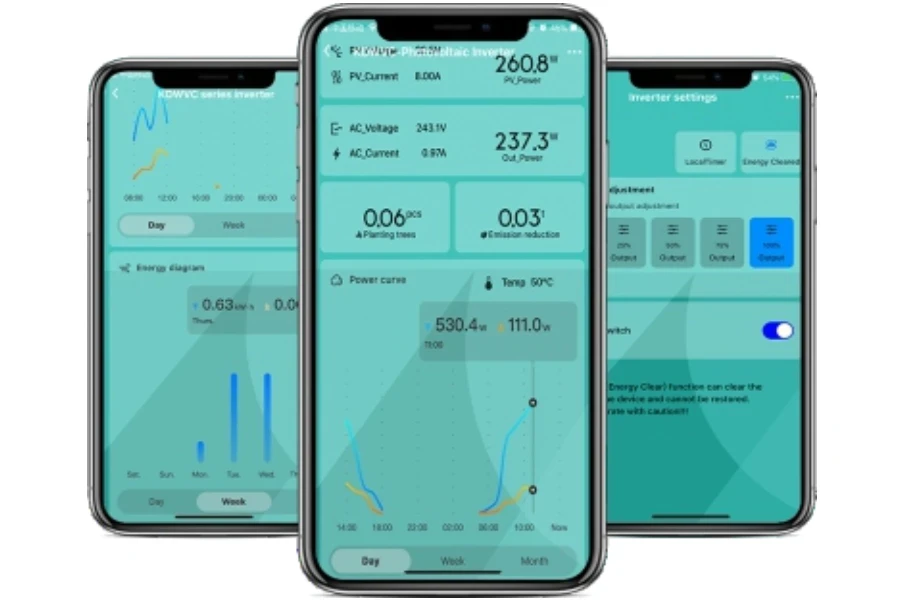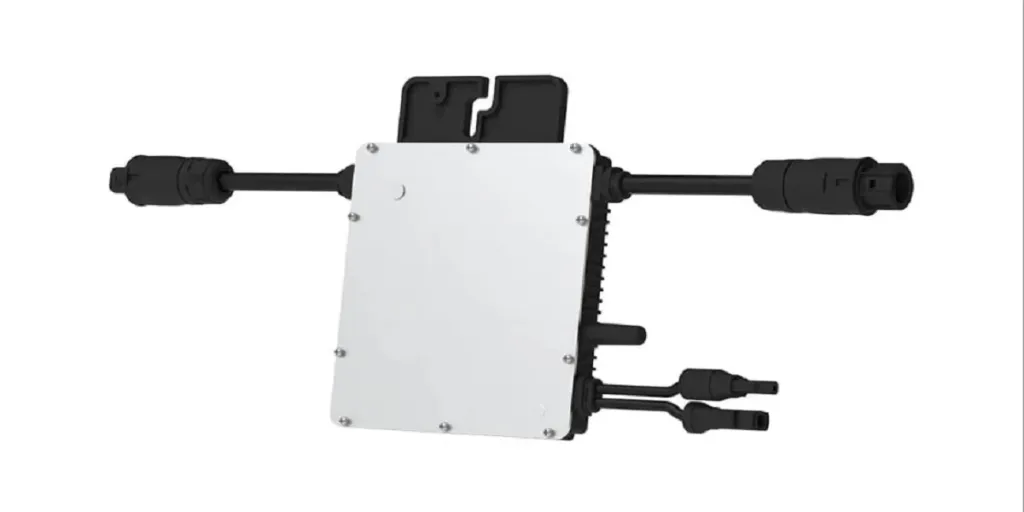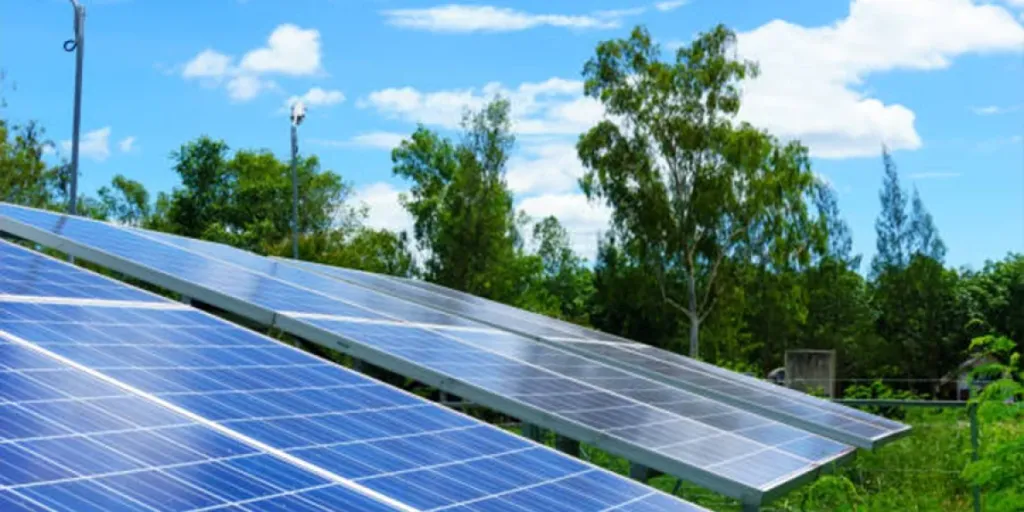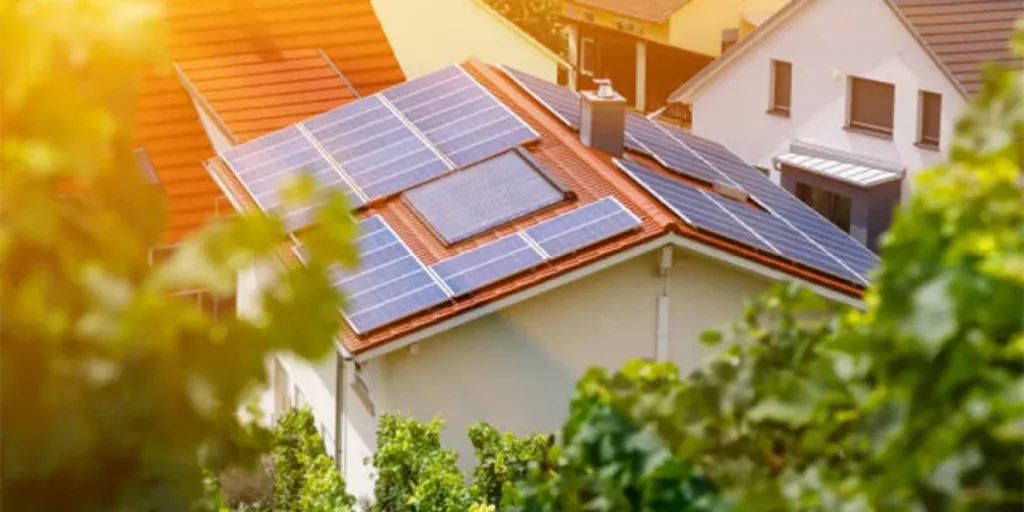As solar energy adoption soars, it’s essential for businesses with solar energy systems to deploy the latest and most effective solutions.
There are many moving parts to every solar power plant. Location, configuration, solar panel quality and quantity, grid connections, and many other factors affect the efficiency of a system. Inverters represent another crucial aspect of a solar energy plant, as they convert solar power into usable electricity.
If you are building or upgrading your solar power plant, this article is a great place to start. In this blog, we’ll talk about microinverters, how they work, and how to choose the perfect microinverter for your solar energy system.
Table of Contents
What is a microinverter?
How do microinverters work?
Choosing the right microinverter for your solar system
Wrapping up
What is a microinverter?
A microinverter is a critical device for solar panel systems. It converts direct current (DC) generated by solar panels into usable alternating current (AC) for household appliances and the electrical grid.
Essentially, a solar energy system relies on microinverters as much as it does on the sun or the panel itself. Without this conversion process, the energy collected by solar panels would be unusable for daily purposes.
How do microinverters work?
Microinverters are electronic devices attached to each solar panel in a system. Traditionally, solar systems use string inverters that connect to multiple panels in a series. However, with a central inverter, a failure in a single panel would affect the rest of the series.
In contrast, microinverters allow individual solar panels in a system to operate independently, which makes them a better choice for safety and reliability. These solar inverters optimize the performance of every panel, mitigating the impact of shading or panel malfunctions on the entire system. For example, if one solar panel is obstructed and receives less solar energy (shading), it can affect the rest of the panels if the system uses string inverters. However, if the system uses microinverters, only this panel will produce less energy. Additionally, this yields safer performance across the system.
Beyond their DC-to-AC conversion function, microinverters often come equipped with real-time monitoring capabilities. This feature allows users to track the performance of each solar panel and quickly identify and resolve any issues. Also, the ability to monitor energy production on a per-panel basis enhances system reliability and efficiency.
Choosing the right microinverter for your solar system
Most microinverters will cost below USD 100 to a few hundred dollars. So, for a large plant, they can represent a significant investment. Also, microinverters will directly affect the efficiency of your entire solar energy system.
As such, it’s critical to consider the range of factors below when choosing microinverters for your solar plant.
System compatibility
Before selecting a microinverter, ensure compatibility with your solar panel specifications and overall system requirements. Check the maximum power rating, voltage, and current specifications.
This is a crucial step and will narrow down your options, depending on your existing solar panel models and other devices.
Monitoring features
Decide what kind of monitoring capabilities you want from your microinverters. Depending on the scale of your system, you may want more or less advanced features, which will also affect the device’s price.
Microinverters can help track energy production metrics, fault detection, and diagnostics. Many offer remote monitoring capabilities, allowing users to access system status anywhere. More advanced models may include environmental condition data, user-friendly interfaces, and mobile apps. This level of comprehensive monitoring ensures optimal system health, facilitates troubleshooting, and empowers users to make informed decisions.

Durability and warranty
Consider the build quality and durability of the microinverter. It should be capable of withstanding environmental factors like heat, humidity, and temperature fluctuations. Make sure to consider your specific local weather conditions and choose accordingly.
Additionally, check the warranty period offered by the manufacturer.
Efficiency ratings
Look for microinverters with high efficiency ratings. The rating indicates the percentage of solar energy that is converted into usable electricity. Higher efficiency contributes to overall system performance and increases energy production.
In the long term, investing in more expensive microinverters that yield better energy results may be worthwhile.
Ease of installation and maintenance
Choose microinverters that are easy to install. Some models come with plug-and-play features or detailed installation guides, making the process smoother for both DIY enthusiasts and professional installers.
In addition to installation, consider the level of maintenance and the type of software the microinverters come with. Knowing how often you’ll need to check the microinverters onsite is helpful, especially for systems in remote locations.
As mentioned earlier, monitoring is a crucial feature of many microinverters, as is the type of software they use. With the right type of software, you’ll be able to regularly check performance metrics, reducing maintenance workloads.
Brand reputation
Research and consider the reputation of the microinverter manufacturer. Established brands often provide reliable products and better customer support. User reviews and testimonials can offer valuable insights.
Cost considerations
While cost is crucial, it should not be the sole determining factor. Consider the overall value offered by the microinverter, taking into account features, efficiency, and warranty. A slightly higher upfront cost may translate into long-term savings.
Compatibility with energy storage
If you plan to incorporate energy storage solutions like batteries in the future, ensure that the chosen microinverter is compatible with such setups. This future-proofs your solar power system, making sure that you can easily expand your clean energy operations.
Wrapping up
Setting up a solar energy system is no easy feat. It takes a lot of research and time to deploy a system that is efficient and optimizes your energy consumption.
When planning your system, it’s important to consider every moving part, including energy inverters. Microinverters are taking center stage in energy conversion for solar panel systems. They deliver optimized performance, safer system features, and important monitoring capabilities for higher efficiency and system longevity.
Depending on your specific project needs, there are many factors to keep in mind when selecting the perfect microinverter. These include system compatibility, durability, efficiency, cost, and more.
At Alibaba.com, we help you stay in the know when it comes to the latest trends in renewable energy. If you enjoyed this blog, check out more news and guides on renewables.




